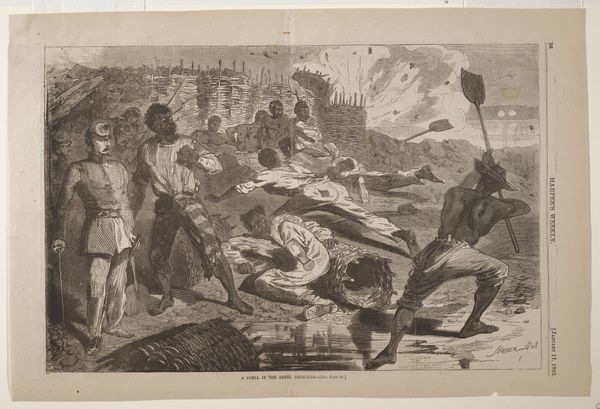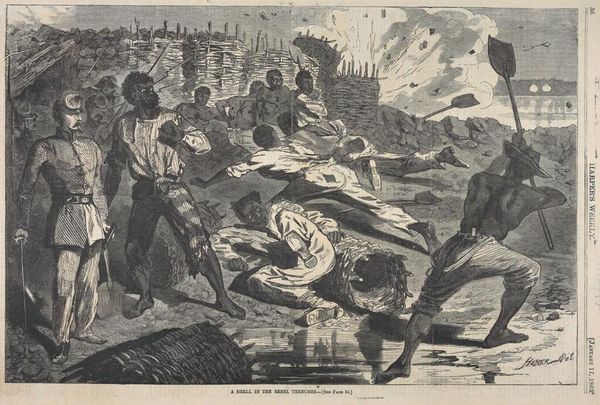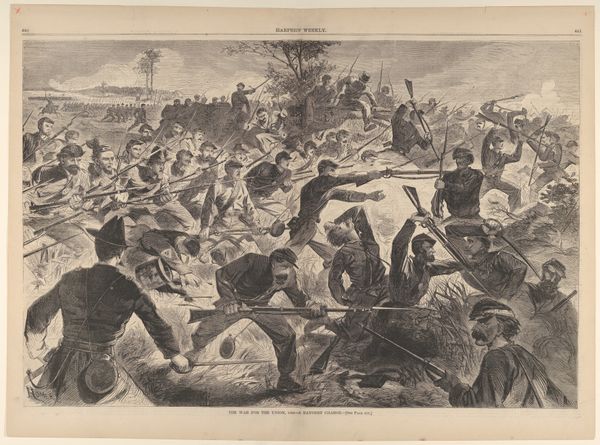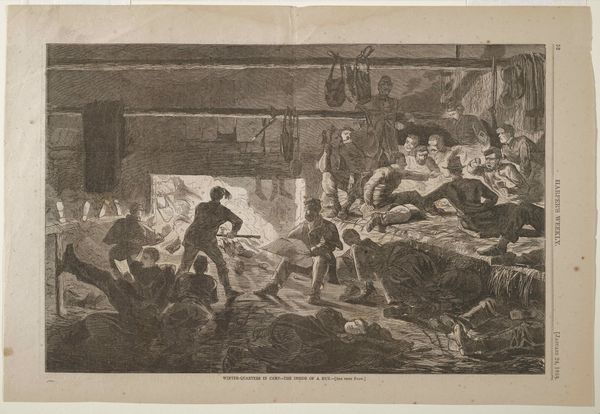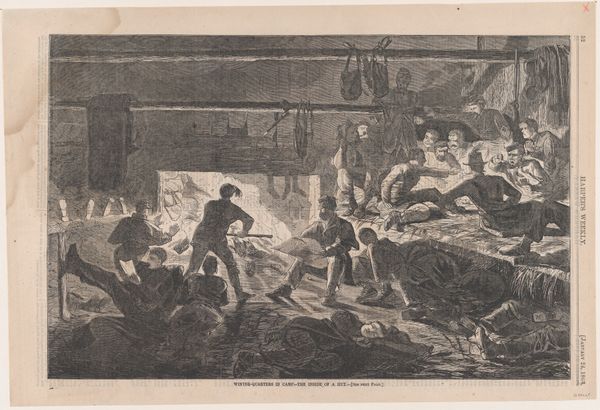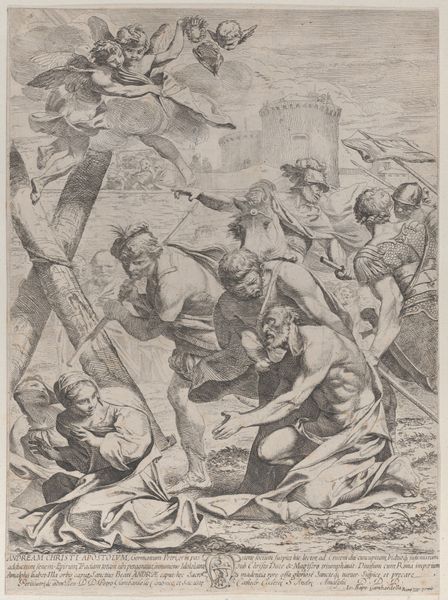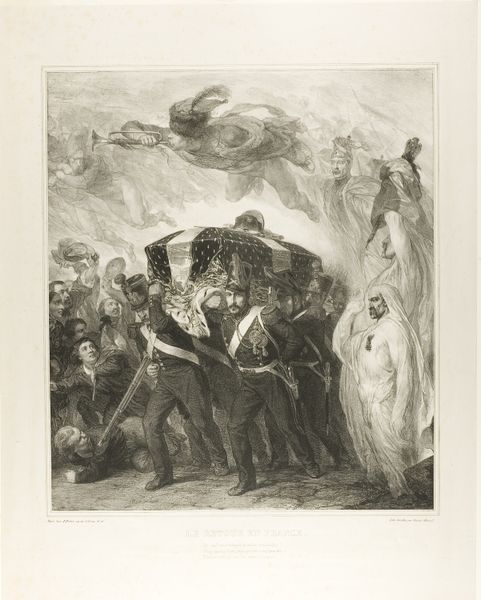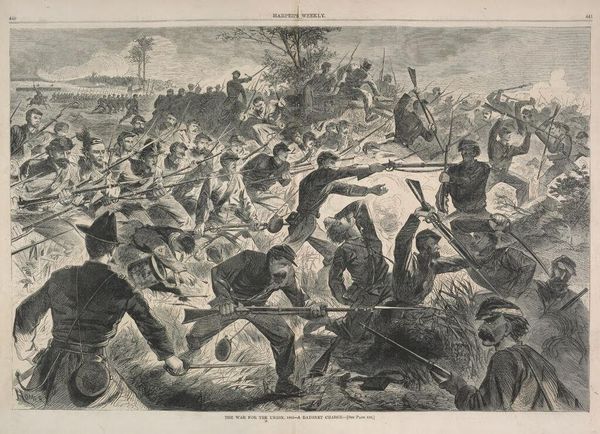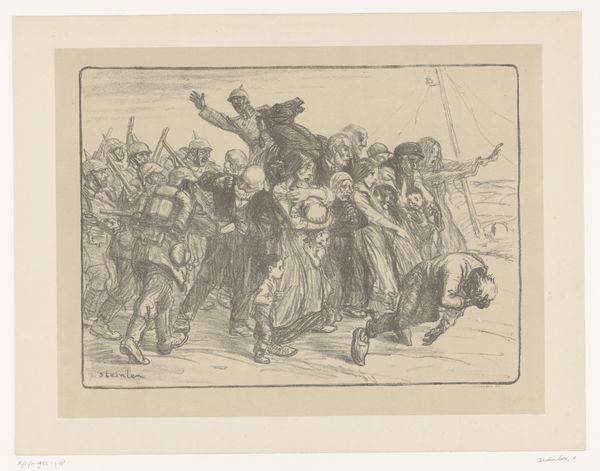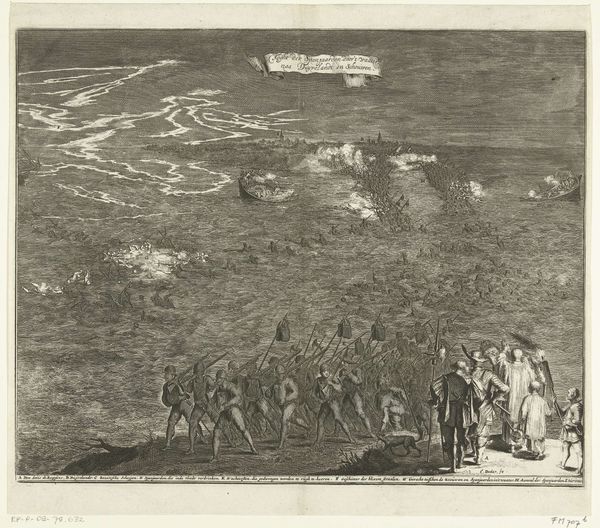
A Shell in Rebel Trenches (from "Harper's Weekly," Vol. VII) 1863
0:00
0:00
drawing, print, etching, pencil
#
drawing
#
narrative-art
# print
#
etching
#
landscape
#
etching
#
figuration
#
pencil
#
history-painting
#
realism
Dimensions: Image: 9 1/8 × 13 3/4 in. (23.2 × 34.9 cm) Sheet: 10 13/16 × 16 1/8 in. (27.5 × 41 cm)
Copyright: Public Domain
Curator: Winslow Homer’s 1863 print, “A Shell in Rebel Trenches,” originally published in *Harper’s Weekly*, captures a moment of intense action during the American Civil War. Editor: My first impression is chaos. A kind of disordered ballet rendered in monochrome; look at how Homer contrasts light and shadow to accentuate the scene's violent energy, as the figures twist and fall within the dense network of lines. Curator: Yes, the print certainly conveys the visceral impact of warfare. But the details of that "disordered ballet" convey much more than violence alone. It’s a moment laden with symbolic resonance. Note how some men carry shovels. In wartime contexts these often became extensions of the body, stand-ins for missing guns—or a signifier of enforced manual labour as part of their war service. Editor: Agreed. Compositionally, these diagonal thrusts echo the shell bursts. The spades point in a direction that repeats and extends those implied lines of trajectory, suggesting an unrelenting attack. We could also talk about the implied textural contrasts created through the rendering of different forms—the smooth skin against the rough-hewn defenses… Curator: Beyond the stark aesthetics, remember that Homer depicted formerly enslaved men conscripted into service for the Confederacy. This changes everything, right? This makes spades weapons—and burdens. The whole scene bristles with ambiguity. Enslaved men who likely would fight with the Union, now used to support the very institution that enslaved them. The men caught between two intolerable choices: almost allegorical figures trapped within an inhumane system. Even the building in the background serves as a haunting architectural form in the distant space behind the blast, perhaps a symbol of their hopes. Editor: Fascinating points about the symbolism there. Homer truly packs a lot into one image using tonal gradations and linear construction—particularly when we consider its publication in *Harper’s Weekly*: designed to inform a mass audience through images rather than through dense political exposition. Its immediate impact is powerful, yes, but once you let his technical orchestration work its magic it generates even richer psychological echoes within the observer. Curator: Exactly! "A Shell in Rebel Trenches" shows us that Winslow Homer possessed more than a mere technical aptitude. He had a rare capacity to create art with enduring historical and psychological insight, that’s as valuable now as when this was first published. Editor: The longer we look, the more intricate Homer's rendering appears: what at first sight looked like the chaotic aftermath of battle turns into something else entirely—a meditation on strategy, human relationships, conflict.
Comments
No comments
Be the first to comment and join the conversation on the ultimate creative platform.
